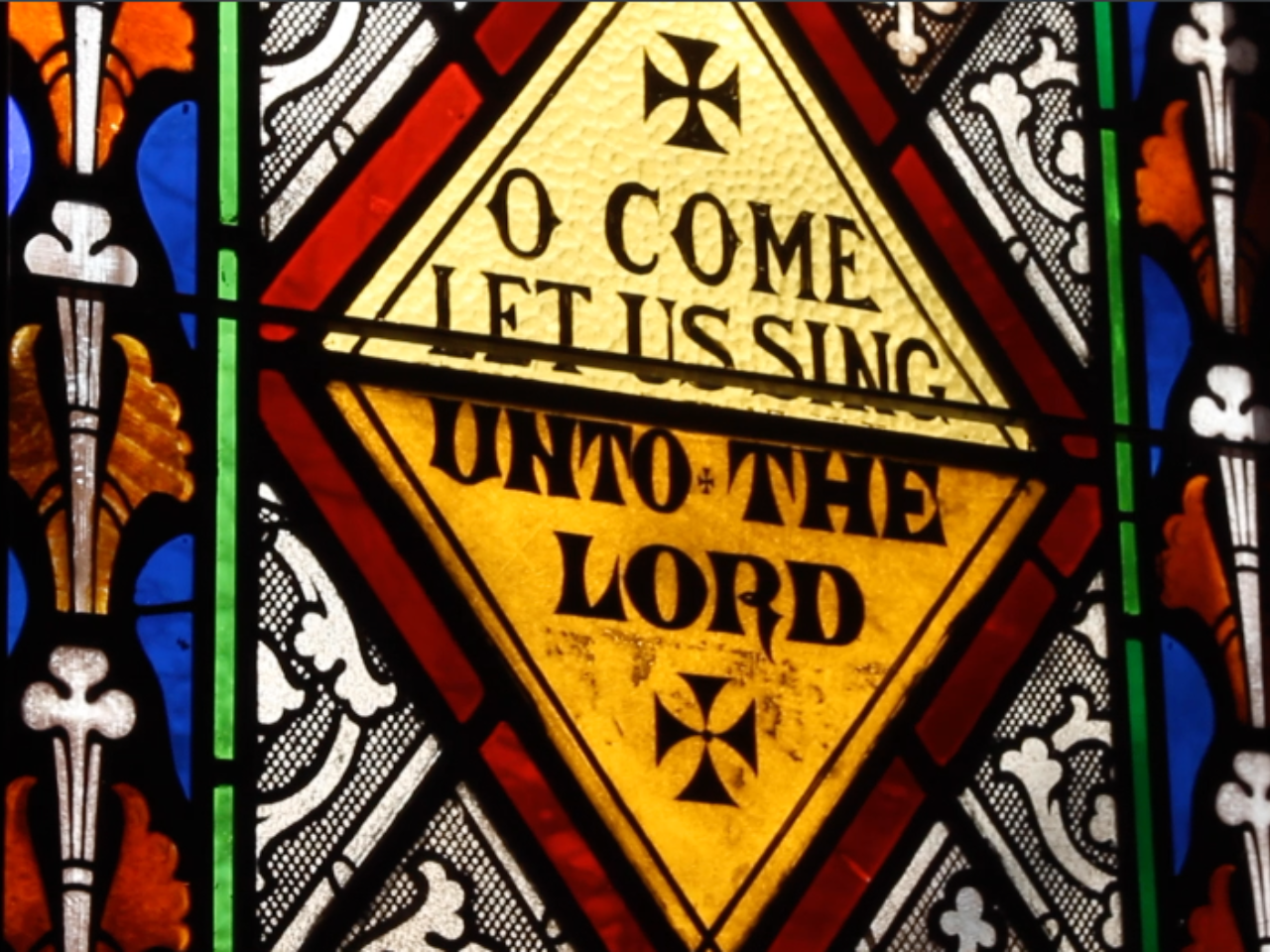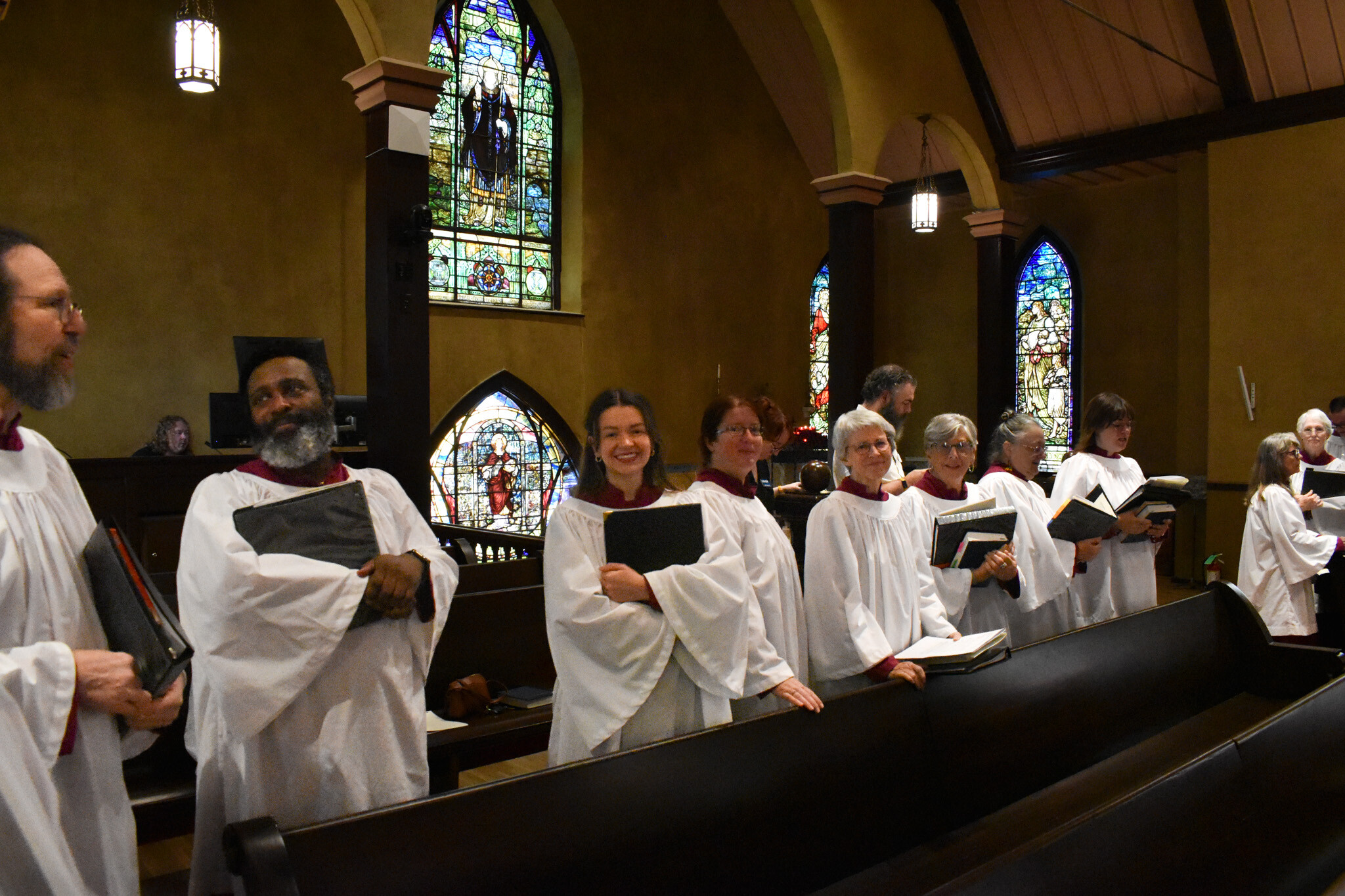
This Sunday at 11:15 a short series of readings from the latter part of the Epistle to the Hebrews comes near to its close (a longer series of readings from the rest of that book occurs in the final part of Year B of the Eucharistic lectionary). The writer ends this discourse on persevering in faith with a reminder of the believer’s destination: not a terrifying spectacle, but rather heaven itself, pictured as a city populated by angels and a citizenry cleansed, adopted, and enrolled, celebrating a great festival. Because we have been given a part in this ‘unshakeable kingdom’ through Christ, the writer says, we should worship God in gratitude, reverence, and awe. Thus it is fitting that we begin the liturgy with a vivid vision of the heavenly city, the well-known ‘Glorious things of thee are spoken’ [Hymn 522], and follow the Epistle with another, ‘O what their joy and their glory must be’ [623].
The former, written by John Newton, slave-ship captain turned Anglican clergyman, abolitionist, and hymnist (the author also of ‘Amazing grace’ and ‘How sweet the name of Jesus sounds’), draws upon myriad passages of scripture not only to depict heaven, but also to refer to our fullest earthly experience of it: the Church and her Sacraments. We experience the ‘living waters’ in the Sacrament of Baptism, while the ‘manna’ is the Body of Christ made present in the bread of the Eucharist. And the Eucharist (which means ‘thanksgiving’) is indeed our thank offering, which we, the ‘royal priesthood’, bring before God.
‘O what their joy and their glory must be’ (which begins ‘O quanta qualia sunt illa sabbata’ in the original Latin) comes from a collection of hymns and hymn-tunes (including one for this hymn, which our choir has occasionally sung) written by Peter Abelard, the brilliant but troubled twelfth-century theologian, teacher, musician, and poet, for the religious community which his wife, Héloïse, had joined. This text, intended to be sung on Saturday evenings (traditionally the beginning of the celebration of the Lord’s Day, which is not only the first but also the eighth day, symbolizing eternity) – focuses less on the characteristics of the city or its inhabitants than on the heavenly life itself: its peace, fulfillment, and endless praise. It reminds the singer, too, that the heavenly city, and no earthly place, is our true ‘dear native land’.




Login To Leave Comment